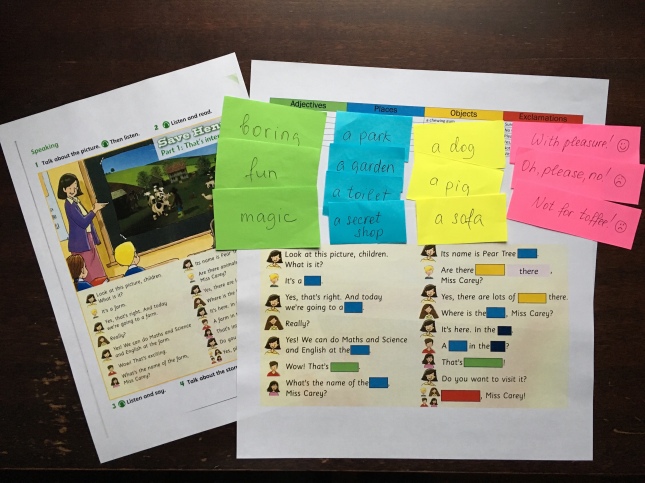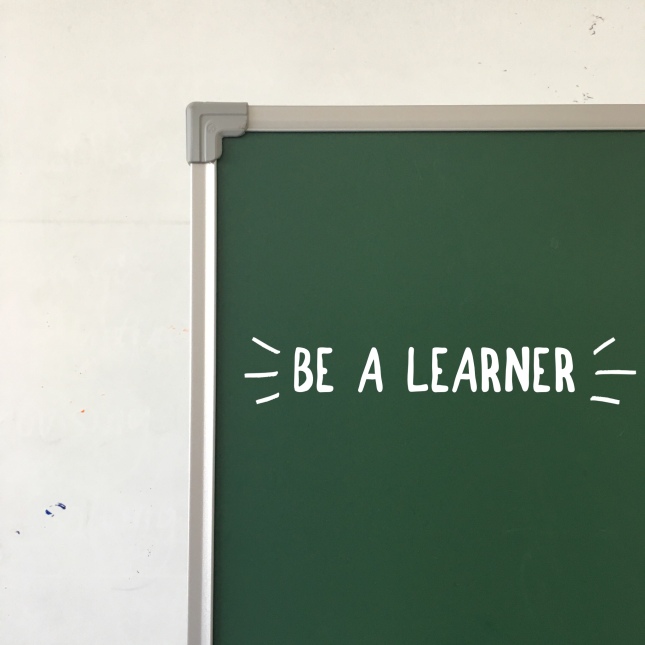#myltmosaics
With this blog post I would like to share what activity I did with my 10-year old student.
But before that, I’d like to note that I do not claim to be any original or ground-breaking in what I do in my lessons. I’m perfectly aware that the lesson and activity ideas that come to my mind might be downright trite and age-old. All I want to do by writing about those ideas is to share my teaching experience and my observations of what worked out and what did not and why. I cherish the hope that these snippets of teaching practice will be of some value for other teachers who like to reflect on their own teaching and who are interested in what their colleagues are doing and what solutions they come up in various teaching and learning settings all over the world.
So here I go.
Today I’d like to share the way I adjusted a course book activity to my teaching purposes and to my learner’s needs.
What did we have?
A. We had a dialogue in the English World Level 3 course book for primary learners.
The course book tasks accompanying the dialogue were:
1. To talk about the picture (with that students are expected to activate the language they already know in order to describe things they see in the picture and get ready for listening and reading tasks);
2. To listen (here the students sort of check up their understanding of what they saw in the picture and are introduced to a model conversation in which they abundantly use the grammar structures they learnt before);
3. To listen and read (here students try to imitate the intonation and pronunciation patterns);
4. To listen and say (here students repeat after the speaker without looking at the text, again imitating the intonation and pronunciation);
5. To talk about the story (here students retell the dialogue paraphrasing the original text but also using the words and expressions from the text);
6. Finally, “Now you!” (which I understand as a call for acting out the dialogue).
That was the task we had.
B. But we also had the particular learner 🙂
A 10-year-old energetic, creative and restless girl. ❤️ She is also a very process-oriented person, loving acting and moving around. It’s not easy if yet possible to entice her to do the tasks she doesn’t want to do even with little prizes or badges. She is immune to gamification 🙂 So there was no any easy or elaborate way I could make her follow the tasks designed by the course book authors.
C. And we had the teacher’s intention to have the learner repeat the dialogue a number of times to internalize the ready-made speaking patterns.
So, the task to solve looked like that:
A (dialogue) + B (learner) + C (repetition) = ?
🧐 What would the solution (D) be like?
D. Well, taking into account that an element of surprise and fun makes people perform the same task numerous times, I decided I needed to do something creative with the dialogue at hand.
Let me have a little digression from the story thread here and quote an eloquent description of an element of surprise. In his book “Hooked”, Nir Eyal speaks about the difference of predictable and unpredictable (variable) rewards, which vividly shows what it feels like when there is an element of surprise in everyday tasks we habitually do:
“The unsurprising response of your fridge light turning on when you open the door doesn’t drive you to keep opening it again and again. However, add some variability to the mix – suppose a different treat magically appears in your fridge every time you open it – and voilà, intrigue is created.”
Obviously, we’ve heard a lot that we, teachers, should do exactly the same thing: bring in an element of surprise into our lessons and classroom activities. So that’s what I did.

[Pic: My development of the course book dialogue]
1. I copied and printed out a page with the dialogue from the book.
2. Covered some words in the dialogue with squares of different colours:
💚 green colour for adjectives;
💙 blue of two shades for places (for the number of different places mentioned in the dialogue);
💛 yellow for objects;
❤️ and red for exclamations.
2. I cut several blank pieces of paper of the colours I assigned for the parts of the dialogue (see above);
3. Together with my learner we came up with different adjectives, places, objects and exclamations and wrote them down on the pieces of paper of the corresponding colour.
4. And then we took turns in reading out the dialogue pausing at coloured squares to pick up cards with words of the appropriate colour and insert them in the dialogue.
Every time each of us read the dialogue with randomly picked words, it was a different funny story. My girl laughed a lot and eagerly took her turns to read the dialogue again and again.
✅ My teaching purpose was achieved!
✅ My learner was happy to be doing what she enjoyed!
✅ The course book task was done!
Well, maybe not exactly the way it was meant by its authors. Well, maybe we were not practicing speaking as such but mostly reading instead, though I should say, the more we repeated the dialogue the less my student looked at the text.
It was also a good opportunity to introduce some new vocabulary and expressions. For example, for places this could be “a cave”, “a castle”, “a lighthouse”, “a bear’s den” or “a cosmodrome”. For adjectives, this could be “tedious”, “scary”, “sparkling” or any other of so many adjectives you might find appropriate to teach your student. For expressions, I chose to teach two new expressions “No way!” and “Not for toffee!” in addition to expressions from the course book.
As I said you can offer your students new words for them to choose from, but it would be good to let students to come up with their own words too. This way they will feel more strongly about the activity as they themselves made some little investment in it leading to the increased sense of learner autonomy.
So this is how I adjusted a course book activity to make it a bit more enjoyable and useful for my learner.
And I’m really happy to say that after long summer holidays, when I saw my student again, she asked me enthusiastically if we were going to do the same activity with other dialogues in her course book. For me, this was the best confirmation of my little teaching success. Could there be any better approval than this? 😊👍
#teaching #learning #learnerautonomy #learningstrategies #elt #efl #learningtolearn #learning2learn #teachingmethodology #languageteaching #languagelearning #primaryschool #younglearners #eltmosaics












